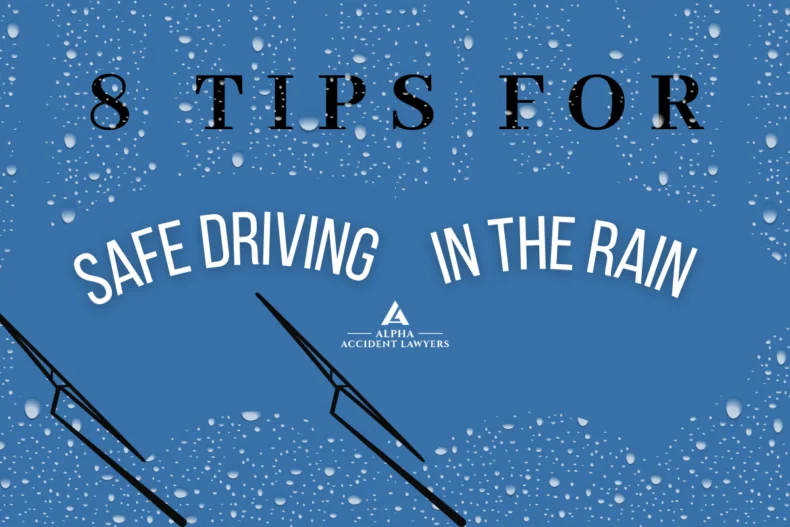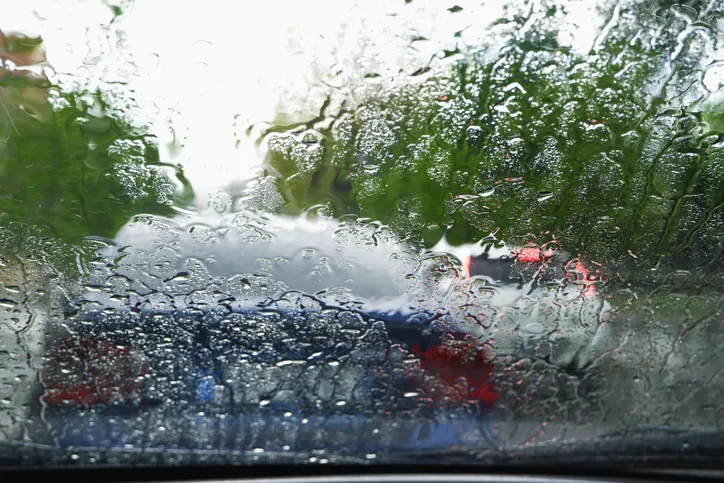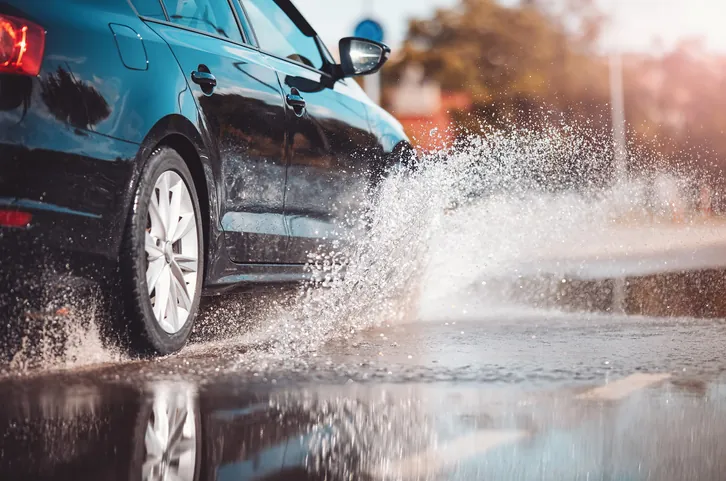Tips for Driving Safely in the Rain
Whether you’re commuting to work or embarking on a road trip, navigating rainy conditions requires extra caution and patience because wet roads are very dangerous. According to the American Automobile Association (AAA), wet roads contribute to nearly 1.2 million traffic crashes every year. By taking extra precautions while driving in wet weather, you help reduce the likelihood of a hazardous situation on the road. Read on to learn eight essential tips for safe driving in the rain.
1. Keep Your Vehicle Maintained
One of the most crucial aspects of wet weather driving is maintaining your vehicle in good working order. Regular maintenance checks can significantly reduce the risk of accidents caused by mechanical failures. It’s recommended to service your car every 12 months or 12,000 miles. In extreme weather conditions, your vehicle may need maintenance more than usual.
If you’re driving in inclement weather, it’s best to ensure your tires are properly inflated and have sufficient tread depth to provide traction on wet roads. Tires cannot provide good wet traction if the tread is worn below 2/32 of an inch (1.6 mm). Ensure you check the following car parts:
- Brakes
- Tire tread
- Headlights and tail lights
- Windshield wipers
- The vehicle’s battery
- The vehicle’s ventilation system
Rain causes humidity levels to rise and your windows may become foggy while driving. Therefore, it’s important to check that your car’s ventilation system is in good working order. Most cars’ ventilation systems include a function that will reduce the fog that forms on the interior of your windows and windshield.
2. Ensure Your Headlights and Windshield Wipers Are On
Visibility is crucial when driving in the rain, so make sure your headlights are on, even during light rain. Additionally, ensure your windshield wipers are in good condition and effectively clear the rain from your windshield. Replace worn-out wiper blades promptly to maintain clear visibility, as compromised visibility can lead to auto accidents.
3. Drive Slowly
Reducing your speed is essential when driving in wet weather conditions. Wet roads reduce tire traction, increasing the distance it takes to stop your vehicle. Don’t feel pressured to drive the posted speed limit. It’s recommended to drive 5 to 10 mph below the speed limit in wet conditions. Drive at a speed that allows you to maintain control of your vehicle and safely react to unexpected hazards.
4. Give Extra Room to Other Vehicles
Maintain a safe distance between your vehicle and the one in front of you. Wet roadways increase stopping distances, so it’s crucial to allow extra space between vehicles to avoid rear-end collisions.
Also, keep in mind that larger vehicles such as trucks and buses may produce more spray, further reducing visibility, so it’s best to increase your following distance when driving behind large vehicles.
5. Do Not Use Cruise Control
Avoid using cruise control when driving in the rain. Cruise control can make it challenging to react quickly to changing road conditions, such as hydroplaning or loss of traction. By maintaining manual control of your vehicle’s speed, you can better adjust to the road’s surface and potential hazards, reducing the risk of accidents.
6. Avoid Driving Through Large Puddles of Water
Large puddles of water on the road can obscure hazards and potentially cause hydroplaning. This occurs when your vehicle’s tires lose traction with the road surface due to a layer of water. Avoid driving through standing water if possible, as it can hide debris or even cause your vehicle to stall. If you must drive through water, proceed slowly and cautiously, and avoid sudden movements or changes in direction.
7. If Your Car Begins to Hydroplane, Gently Ease off the Gas
If you feel your car start to hydroplane, remain calm and avoid sudden steering inputs or braking, which can worsen the situation. Instead, gently ease off the gas pedal to reduce speed gradually and steer in the direction you want to travel until your tires regain traction.
8. Pull Over if You Have To
If the rain becomes too heavy or visibility is severely reduced, it may be best to pull over to a safe location until the weather conditions improve. Find a well-lit area away from traffic, such as a parking lot or rest area, and wait until the rain subsides or visibility improves before continuing your journey.
Even with Safe Driving, Accidents Can Still Happen
Despite taking all necessary safety precautions, car accidents can still occur, especially in adverse weather conditions like heavy rain.
If you find yourself involved in a collision:
- Check for injuries and call 911
- Move your vehicle to a safe location, if possible
- Exchange contact and insurance information with other drivers
- Take photos of the auto accident scene
- Notify your insurance company
- Consult with an experienced car accident lawyer who will safeguard your rights and help you hold the liable parties responsible
We Fight for Auto Accident Victims
In the unfortunate event of an accident, it’s essential to consult an experienced car accident lawyer to ensure your rights are protected. At Alpha Accident Lawyers, we understand the physical, emotional, and financial toll that auto accidents can have on victims and their families. We are dedicated to helping injured victims recover fair compensation for their medical expenses, lost wages, and pain and suffering.
Our award-winning team of personal injury attorneys will guide you through the claims process and advocate on your behalf to obtain the compensation you deserve. Don’t face the aftermath of an auto accident alone—let us fight for you. Call us today to schedule a free consultation.






